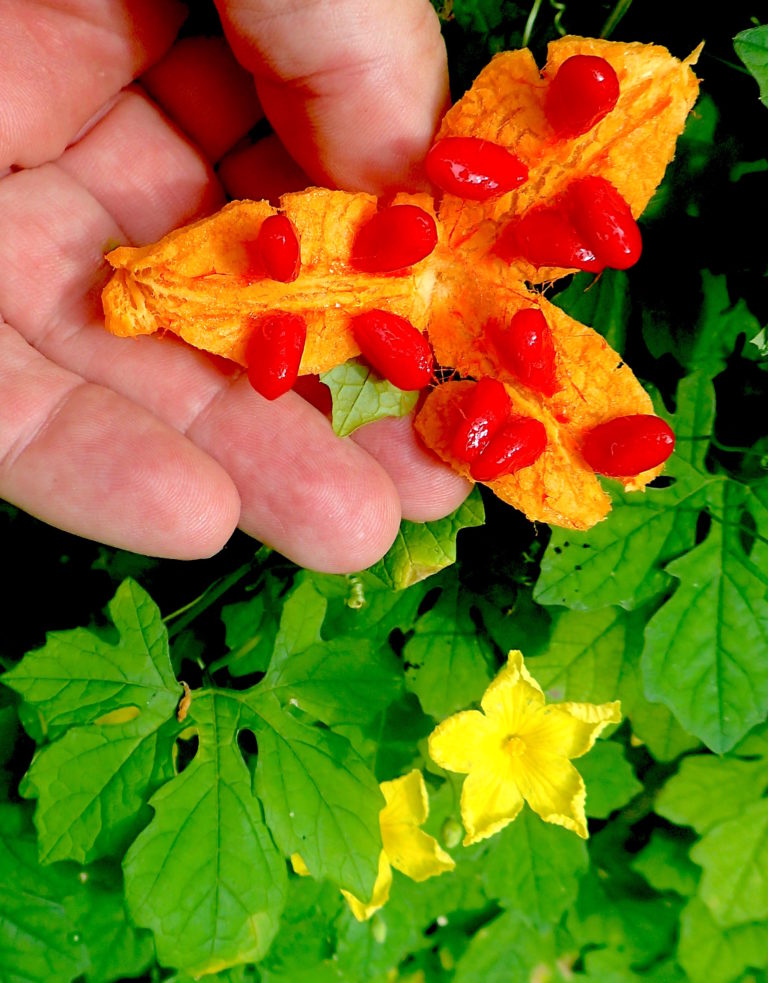
The red coating on the Bitter Gourd seeds is edible but not the seeds nor the orange fruit. Cooked green fruit and boiled leaves are edible. Photo by Green Deane
When is a problem not a problem but still a problem? One answer is when incorrect information is copied by a reputable organization then placed on the internet. This unfortunately happens often. A well-known cancer center, which is not an expert site on plant information, says this about the red arils of the Bitter Gourd, Momordica charantia: “The covering on bitter melon seeds (called red arils) are toxic in children, causing vomiting, diarrhea, and death.”
Simply said, that is not true. Ripe fruit and seeds have sickened children and killed small animals intentionally fed with said. The juice of the vine intentionally given to a child killed the child. The red arils on ripe seeds, however, are edible.
In the Journal of Economic Botany, Volume 21, 1966, there is a long article by Julia F. Morton, professor of botany at the University of Miami. Ms. Morton lived the Caribbean Islands and wrote extensively about their flora and uses both as food and as medicine. On page 59 she states: “The sweet, red arils are sucked from the seeds by children and adults…” Twenty two years later in
volume 42 of the same journal two authors, Walters and Decker-Walters, on page 286, state the plant’s edible uses include “the pulpy arils as a sweet.” In her book, Plants Poisonous to People in Florida, Hallmark Press, 1995, on page 74 Morton writes: “… the red arils are edible.” She then warns people to not eat the ripe fruit or seeds. I have eaten the red arils for decades, I have seen children eat the red arils, and I knew a nursing mother who ate the red arils. So besides being wrong how does this information get wrong in the first place? where does the “vomiting, diarrhea and death” come from? One answer is someone made a leap without evidence. For example:
In 1978 the state of Florida published a circular called the Guide to the Poisonous and Irritant Plants of Florida. The format was in four vertical columns to a page: Genus, Species, Toxic Parts & Constituents, Effects & Remarks. To the
circular’s credit it does not say the arils are toxic. It says ripe fruit, seeds, and juice have caused death in small (experimental) animals and a child (no mention of arils or that the juice was intentionally given.) But in two columns side by side you have toxic ripe fruits and seeds aligned with poisoning of children, small animals dying, and poisonous juice. It is there one finds: “..vomiting, diarrhea and death.” A not-too-careful reader extends that to the arils, puts it on a website and it become internet truth after proliferation. Now you know. The red arils are not toxic to child or adult. If you want to read about the Bitter Gourd you can
It’s not June but soon the Paper Mulberries will be busting out all over. Broussonetia papyrifera is a difficult species to describe. The official view is that it is a weedy, invasive species. The view from the forager end is that it’s a tasty and useful tree that’s difficult to misidentify. The species is closely related to breadfruit which makes sense when you see the naked spherical infructescence. What is an infructescence? A pineapple is a cylindrical infructescence, a fruiting head, an ensemble of fruit. The spherical infructescence of the Paper Mulberry is about the size of a large marble. Then it gets covered with what looks like hairs. Those hairs grow fat and orange. When ripe the fruit looks like a small orange pompom. The infructescence itself is not edible but the orange fruit parts are as are young leaves cooked (usually boiled.) And in a pinch it is also known as the Toilet Paper Tree. You can read more about it here.
You don’t have to wait until fall to find Sugarberries. Also called Hackberries these large trees are putting on green fruit that this fall will turn dark orange and sweet. One of the most identifying characteristics of mature trees is warty bark and no thorns. The leaves have uneven shoulders and three main veins on the back, a little unusual for a tree. If you find the tree you still have to search a little for the green berries as they hide well now (probably so the birds won’t find them.) I’ve had to change my thinking about Sugarberries. I usually find them near water, or damp places yet not all the time. I will occasionally find one on high ground but in a spot that gets run off or the like, a high damp spot as it were. You can read more about Hackberries here.
Foraging Classes: Except for hurricanes foraging classes usually are held as scheduled. We’re hungry when we are cold and wet so foraging classes are held when it is wet, when it is cold, and when it’s hot.
Sunday, April 2nd, Red Bug Slough Preserve, 5200 Beneva Road, Sarasota, FL, 34233. 9 a.m.
Sunday, April 9th, Wickham Park: 2500 Parkway Drive, Melbourne, FL 32935-2335. 9 a.m. Meet at the “dog park” inside the park (turn right after entrance, go 1/4 mile, dog run on right, parking at run or on previous left.)
Saturday, April 15th, Colby-Alderman Park: 1099 Massachusetts Street, Cassadaga. Fla. 32706. 9 a.m.
Sunday, April 23rd, Florida State College, south campus, 11901 Beach Blvd., Jacksonville, 32246. 9 a.m. We will meet at building “D” next to the administration parking lot.
Saturday, April 29th, Bayshore Live Oak Park, Bayshore Drive. Port Charlotte. 9 a.m. Meet at the parking lot at the intersection of Bayshore Road and Ganyard Street.
To read more about the foraging classes go here.
Spring orders have started their annual increase. All of Green Dane’s videos available for free on You Tube. They do have ads on them so every time you watch a Green Deane video I get a quarter of one cent. Four views, one cent. Not exactly a large money-maker but it helps pays for this newsletter. If you want to see the videos without ads and some in slightly better quality you can order the DVD set. It is nine DVDs with 15 videos on each. Many people want their own copy of the videos or they have a slow service and its easier to order then to watch them on-line. They make a good gift for that forager you know. Individual DVDs can also be ordered. You can order them by clicking on the button on the top right of this page or you can go here.
Want to identify a plant? Looking for a foraging reference? Do you have a UFO, an Unidentified Flowering Object you want identified? On the Green Deane Forum we chat about foraging all year. And it’s not just about warm-weather plants or just North American flora. Many nations around the world share common weeds so there’s a lot to talk about. There’s also more than weeds. The reference section has information for foraging around the world. There are also articles on food preservation, and forgotten skills from making bows to fermenting food. You can join the forum by clicking on the button on the upper right hand side of this page.
EatTheWeeds Time Capsule: 2011
Did You Know? When you buy thistle seed in the United States to feed birds (or yourself) know they are not thistle seeds, despite the label. They are seeds of the Guizotia abyssinica, the Niger Seed which is really from the highlands of Ethiopia. Often sold as finch food the seeds are fried, used as a condiment, dried to make a chutney, or mixed with honey and made into sweet cakes. The oil is a substitute for Ghee. Imports of the seed became dicey after the U.S. government in 1982 said untreated seeds were adulterated with seeds from at least nine noxious weeds five of which are edible. The first five of the nine are edible: African couchgrass, red rice, kodo millet, onion weed, and mesquite. A 2001 law required that imported niger seed be heated to 248 °F (120 °C) for 15 minutes. A variety of G. abyssinica, EarlyBird Niger, was developed in 2002 and adapted to the United States. It is now in commercial agricultural production in the U.S.
This is issue 250
If you would like to donate to Eat The Weeds please click here.

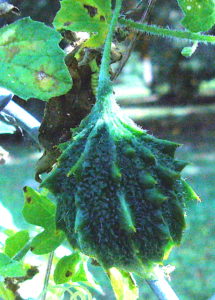
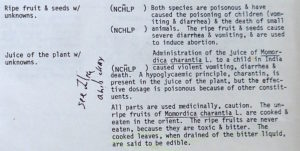
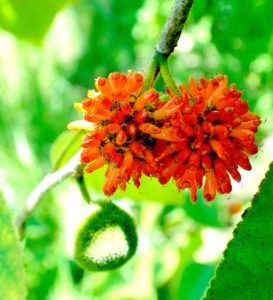
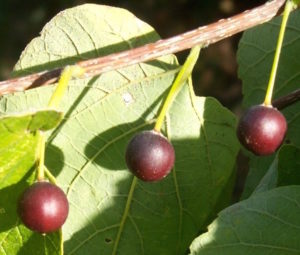
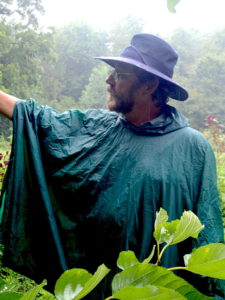

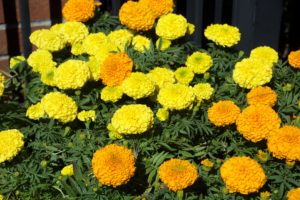
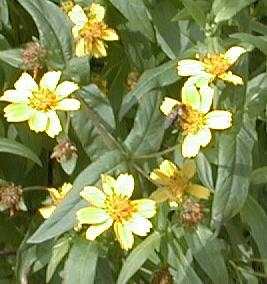

From the time capsule 2011, I pick two of those ” adulterable and obnoxious plants”. First I take Pearl millet instead of Kodo millet that was meant in the capsule. Pearl millet is well known all over my country especially in western part where it could be considered a stable diet for many. On my part, I frequently enjoy the pudding made out of flour of the seeds. What a taste to mix with milk and sugar. By the way, I once confused ” Cattail ” with this plant on my first encounter of it.
The second plant is Mesquite. It is considered invasive and well attacked by agriculural authorities because of the huge areas occupied by roots replacing useful land; however it provides much good shade some times people like to utilize for camping and recreation. I personally like chewing the ripe dry yellow fruit and suck the good tasty ,a bit bitter ,but sweet material.
Here on the big island I have Bitter Gourd growing all over my property. I pop open the orange fruits and suck the red seeds, then spit them out. They are sweet and a little tart. Same as a gac fruit (not sure it related). I’ve never felt sick from it. Once I went through about 20 when clearing brush. I only eat the ones that pop open easily. I dont eat them if they popped open on their own becuase of possible slug contamination.